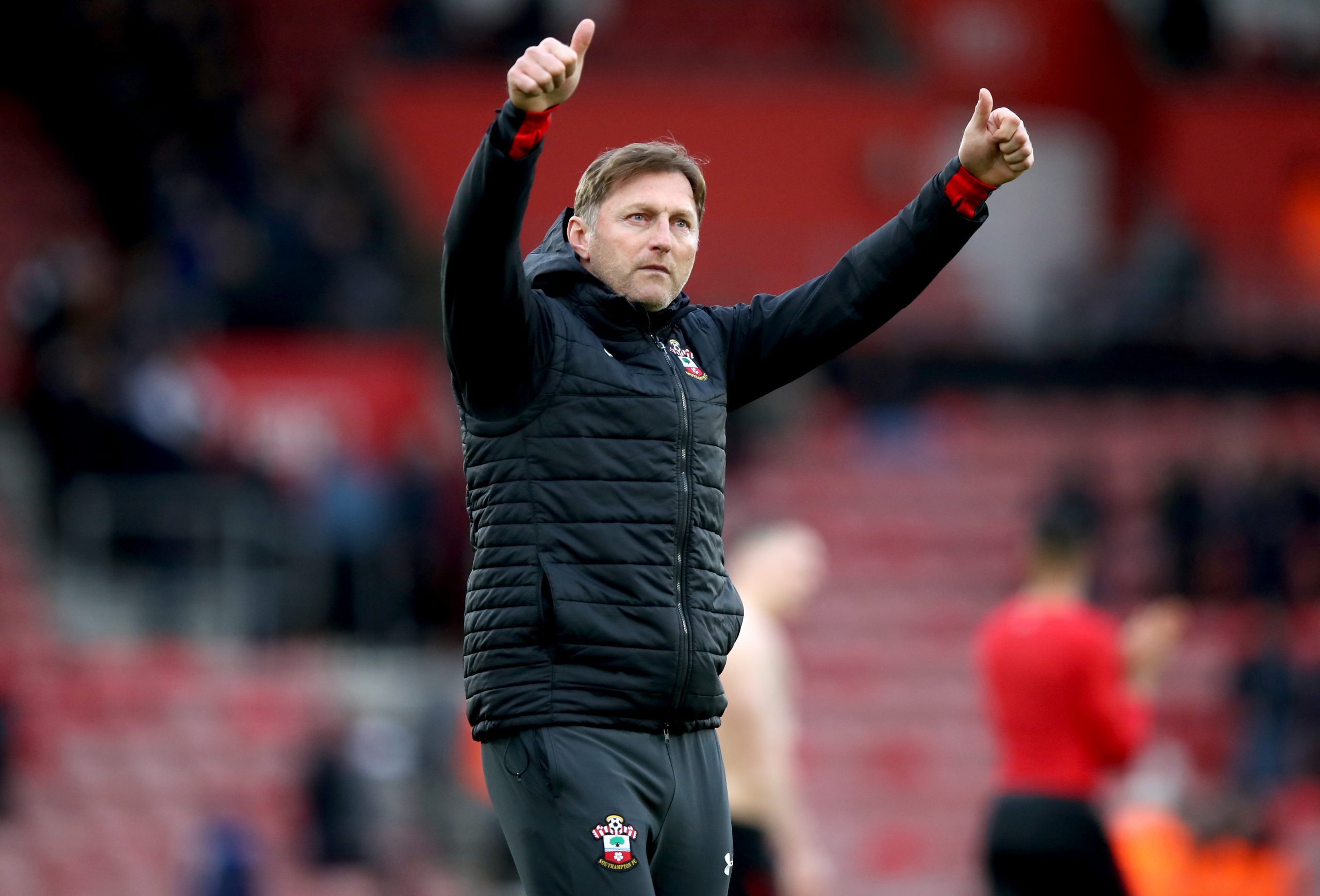When Southampton replaced Mark Hughes with Ralph Hasenhüttl in December, there was a real sense of getting back on track, of returning to the values that served the Saints so well in their first few years back in the top flight. So is it working?
In the crudest possible terms, Hasenhüttl’s primary job this season has been to keep Southampton up. The club are currently five points from the drop, and the bookmakers only have their chances of starting next season in the Championship at around 1.2-2.5%. Things should be ok. Hasenhüttl can not unreasonably expect to keep his job and look to take things further next year.
But the promise of the Austrian was more than a simple firefighter. The hope, the dream, was that he could have a similar impact to that of Mauricio Pochettino several years ago. Though a different brand of football, more the Austrian-German counter-pressing and transition-heavy style than Pochettino’s Marcelo Bielsa-influenced pressing to the goalkeeper, there was a belief that Hasenhüttl could implement a playing style into the club and build a side with a clear identity. This is a longer term project and it’s obviously too early to judge the success of this, but it’s worth evaluating how much has been achieved so far.
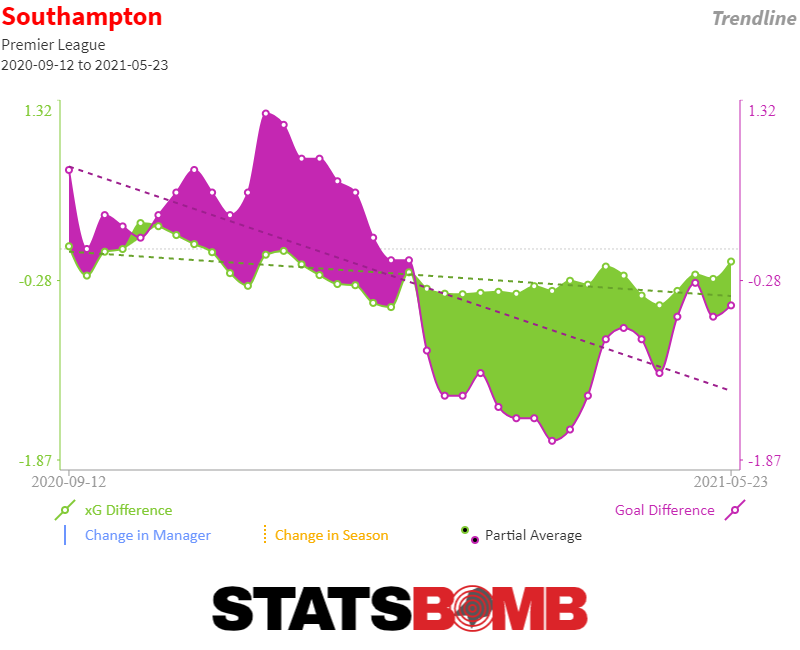
Quantitatively, it’s not obvious that this edition of Southampton are currently any better than the side we saw under Hughes. The Welshman saw the Saints put up an expected goal difference per game of -0.29. Hasenhüttl has seen that figure rise all the way to an incredible -0.28. In that regard it feels as though the “Alpine Klopp” is on a not too dissimilar first season in England than the German himself. Though Jürgen Klopp took over Liverpool in October 2015, it took until the following season for the side to really develop the identity one associates with them today. With a tactical structure yet to be introduced, the main thing Liverpool did that season was just a lot of pressing, often incoherently. Hasenhüttl’s Southampton, so far, have been not too different.
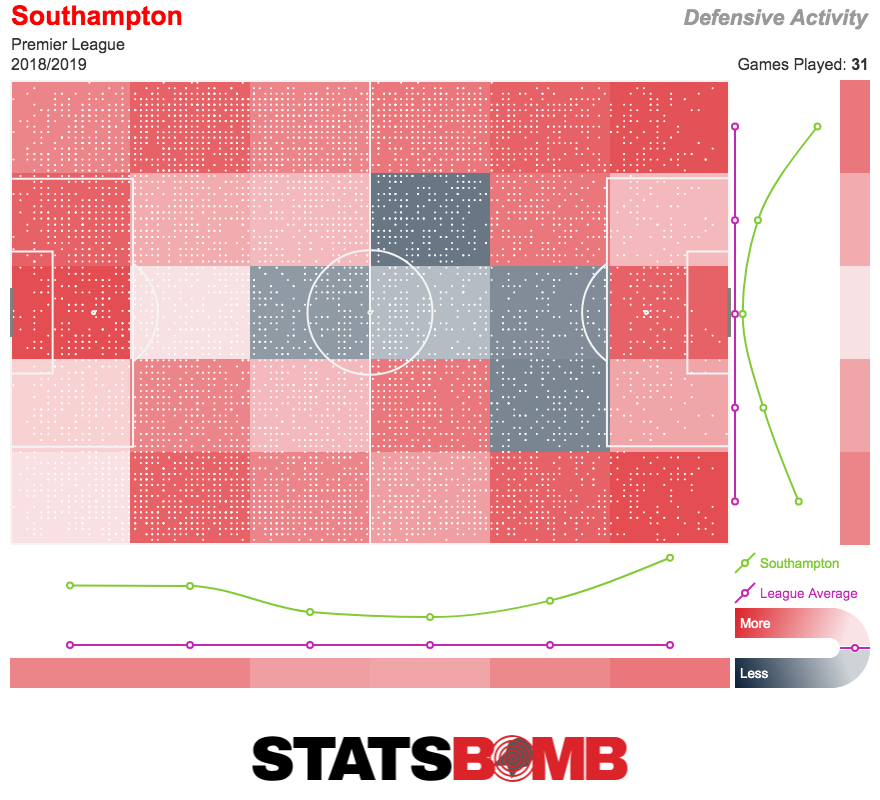
That’s a lot of red in the defensive activity map. Southampton may not be very good, but it isn’t due to a lack of effort. And they’re not just pressing harder, but higher. The side’s defensive distance has risen from 41.84 to 43.60 since the Austrian turned up.
This is in some ways a return to what Southampton are supposed to be doing. Hughes’ predecessors, Mauricio Pellegrino and Claude Puel, weren’t always producing the most entertaining football to watch, but both favoured something of a more proactive approach to defending. Looking at the graph of the number of opposition passes allowed before an attempt to win the ball back below, it’s obvious that Hughes’ team were much more relaxed about letting opponents have long spells of possession, and Hasenhüttl has overseen a return to Pellegrino levels. Hughes is less associated with defensive organisation than someone like fellow Welshman Tony Pulis, but he’s still a British manager at heart, and his instincts without the ball are for the side to stay relatively deep and compact, so he had the players cut down on the pressing. Less so with Hasenhüttl, and it’s not a surprise that everyone seems to have largely been able to switch back to what they were doing before. The crucial thing, though, is that the way Hasenhüttl ultimately wants Southampton to play is not simply to do plenty of pressing, but to press at specific moments, to win the ball back at the right times to force fast transitions. This, one would expect, will take a longer period of time to teach.
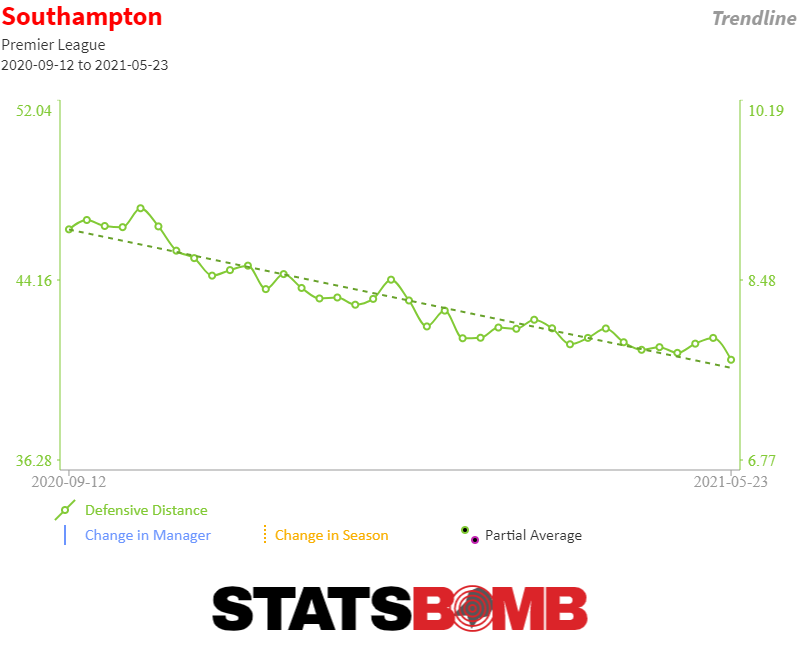
Another similarity with Klopp’s first season is that Hasenhüttl just can’t seem to settle on a formation. Southampton went for the kind of 4-4-2/4-2-2-2 we saw Hasenhüttl embrace at RB Leipzig in last weekend’s win at Brighton, but this broke a recent run of favouring a back 3. Obviously Hasenhüttl, arriving in December, has not been immediately clear of who his strongest personnel are and how best to use them. When he is attempting to teach his players a clear system, though, switching between different systems does feel as though it will slow down the process of imprinting his approach on the club.
In terms of players, there are some signs of things settling. Mario Lemina’s fitness problems have led to Pierre-Emile Højbjerg and Oriel Romeu establishing themselves as the first choice midfield double pivot. Romeu is a fairly conventional defensive midfielder, getting through a reasonable volume of work without contributing hugely to the attack, a fairly classic fit in the genre of “unglamorous” midfielders.
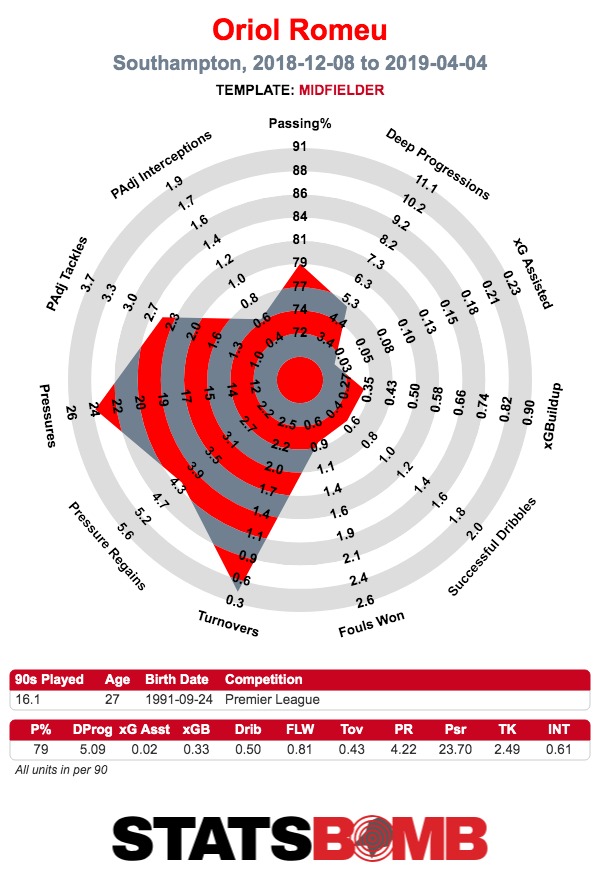
Højbjerg offers more of a two-way option. A decent all-rounder, the Dane leads Southampton in deep progressions per 90 (passes, dribbles and carries into the opposition final third) while still providing defensive output. It does seem like Hasenhüttl’s system is capping his attacking output at least a little bit, with a now greater focus on pressuring the opposition, but this midfield pairing seems reasonably stable.
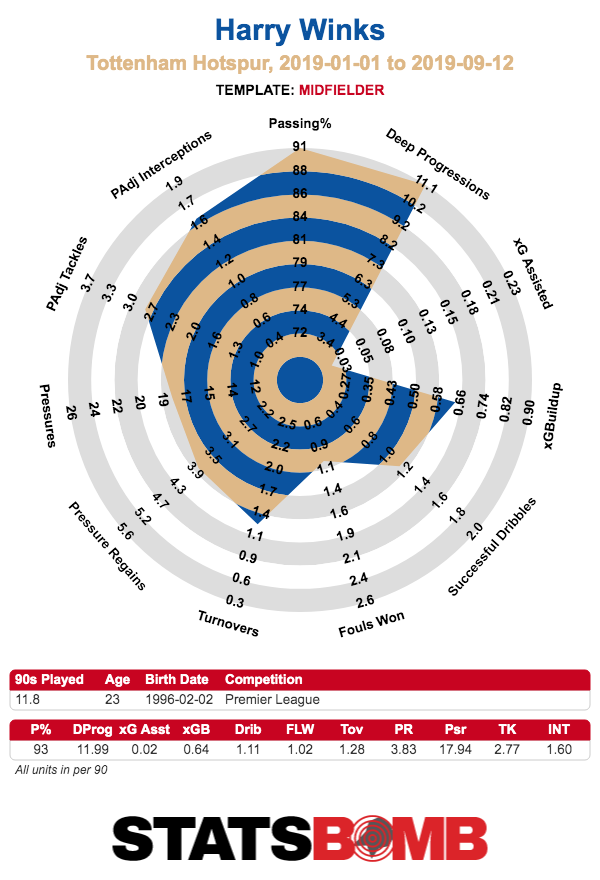
Yan Valery has emerged fairly suddenly as the right back replacement for the departed Cédric Soares, but purely based on numbers, the 20 year old still looks like a work in progress. A relatively active defender who looks stronger in the air than one generally expects in that position, he will have to learn to offer more on the ball to become a serious talent in this role.
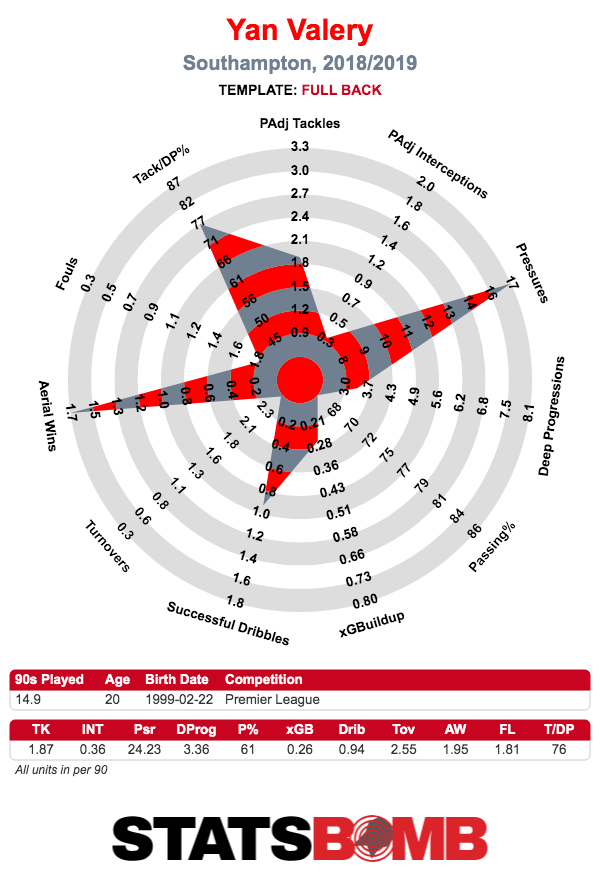
Higher up the pitch is where some squad construction issues seem to lie. Dušan Tadić, a key creative outlet for a number of years, was sold to Ajax. Southampton’s leading players in terms of open play passes into the box per 90 last season were Tadić and the talented but frustrating Sofiane Boufal. This year, with summer signings Stuart Armstrong and Mohamed Elyounoussi not being write-offs but not quite offering this skillset, the responsibility has fallen to Nathan Redmond.
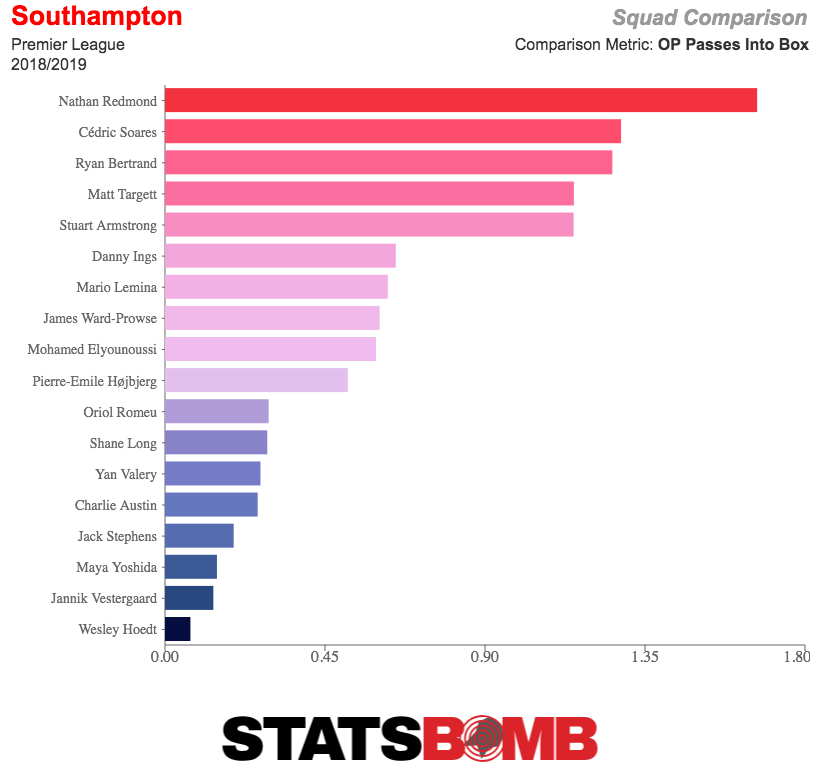
That the next three most frequent passers into the box are all full backs shows the issue here. Southampton lack great creative passers in the final third. James Ward-Prowse has seen a lot of praise come his way recently, but he is much more of a set piece specialist than a consistent threat in open play. Redmond offers a solid dribbling threat, while Danny Ings has shown himself to be a useful striker when fit, but it still feels like a creative passer is a must buy this summer.
It’s really a point of transition for Southampton right now. The first hurdle Hasenhüttl had to clear, avoiding relegation, is well in sight. The second, to build a counter-pressing side that can gradually move back up the table, is rather more complex. The team hasn’t yet shown signs of really improving under his tenure, but he seems to be attempting to move towards a cohesive system very different to what was done under Hughes.
Assuming he keeps his job, this summer will be crucial for the Austrian in multiple ways. The transfer market, obviously, is a chance to reshape the squad at least a little bit toward what he wants to do. But the chance of a long preseason of serious tactical work could really help get his ideas across. Many of these Southampton players have been asked to press before, but no two pressing systems are quite the same, and what Hasenhüttl wants might be quite different to anything they’ve done in the past. It’s still entirely possible that his time in the south coast ends up being a failure, if the side fail to improve on this season. But there at least seems to be a coherent plan this time, rather than the bizarre attempt at short term thinking with Hughes. Southampton have the right idea, even if we can’t yet tell if the execution is there.
Header image courtesy of the Press Association
